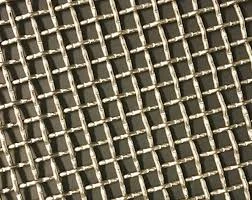nov . 08, 2024 20:22 Back to list
fencing the field
Fencing the Field The Art and Importance of Agricultural Boundaries
In the agricultural landscape, delineating boundaries is crucial not only for defining property lines but also for fostering productivity and ensuring sustainability. Fencing the field refers to the practice of enclosing land to protect crops, manage livestock, and control resources effectively. While this practice may appear straightforward, it encompasses a range of techniques, materials, and purposes that reflect both traditional values and modern agricultural practices.
At its core, fencing serves several primary functions. Firstly, it provides a physical barrier that keeps livestock within designated areas, preventing them from straying onto neighboring farms or public roads. This not only protects the animals but also helps maintain the integrity of crops in adjacent fields. Additionally, fencing can safeguard crops from wild animals that could devastate a farmer's hard work. By using effective fencing methods, farmers can prevent losses and promote a more stable agricultural environment.
The types of materials used for fencing vary widely, influenced by geographic location, budget, and the specific needs of the farm. Traditional wooden or barbed wire fences have long been standard, allowing farmers to create sturdy and cost-effective boundaries. However, advancements in materials have paved the way for modern solutions such as electric fencing and high-tensile wire, which can deter predators more effectively and require less maintenance over time. The choice of fencing material is often a reflection of the farmer’s priorities, balancing aesthetics, durability, and cost.
Moreover, fencing can play a significant role in pasture management. Rotational grazing, a sustainable practice where livestock are moved between different pastures, relies heavily on effective fencing. By rotating livestock, farmers can allow grass to recover and thus maintain a healthy ecosystem that promotes soil health and improves the quality of forage. In this context, fencing becomes a tool not just for confinement but for enhancing the productivity of the land.
fencing the field

In addition to its functional aspects, fencing can also convey a sense of ownership and stewardship over the land. For many farmers, their fields represent generations of hard work and dedication. Properly maintained fences reflect care for the land and the community, fostering pride and respect within the agricultural sector. Furthermore, well-kept fences can enhance the aesthetic appeal of farms, making them more attractive to visitors and potential buyers, should the opportunity arise.
However, the practice of fencing the field is not without challenges. One significant issue is the impact of fencing on wildlife. In some regions, fences can pose barriers to wildlife migration, disrupting natural movement patterns and threatening biodiversity. As a result, many conservationists advocate for fencing designs that incorporate wildlife corridors or use fencing materials that allow for easier passage of smaller animals. Balancing agricultural needs with ecological considerations is vital for sustainable farming practices.
Additionally, fencing requires regular maintenance, which can be a financial and labor-intensive task for farmers. Repairs, replacement of materials, and adjustments due to natural wear-and-tear can add up, leading to increased costs. Farmers must factor these responsibilities into their budgets and schedules, ensuring that their fences remain effective and reliable over time.
As society continues to evolve, so too does the concept of fencing in agriculture. The rise of technology has brought innovative solutions such as GPS-enabled monitoring systems and drones that can assist in maintaining boundaries and managing livestock more efficiently. These advancements not only save labor but also enhance the precision of farming practices, leading to better outcomes for both the farmer and the environment.
In conclusion, fencing the field is much more than a mere agricultural practice; it is a fundamental component that influences productivity, sustainability, and the overall management of land. From preventing livestock from straying to protecting crops from wild animals, effective fencing is a crucial aspect of responsible farming. As we move forward, it is vital that farmers continue to adapt their fencing practices to ensure a balance between agricultural productivity and conservation, ensuring that the land remains viable for future generations. Through thoughtful management and innovative approaches, fencing can be a tool that not only secures fields but also nurtures the environment in which we live.
-
The Role of Field Wire Fence in Grassland Conservation
NewsJul.15,2025
-
Stainless Steel Razor Wire Durability in Coastal Environments
NewsJul.15,2025
-
Enhancing Home Security with Mesh Fences
NewsJul.15,2025
-
Diamond Mesh Wire for Small Animal Enclosures
NewsJul.15,2025
-
Common Wire Nail Tensile Strength Testing for Woodworking
NewsJul.15,2025
-
Barbed Wire Corrosion Resistance Galvanization Techniques
NewsJul.15,2025









